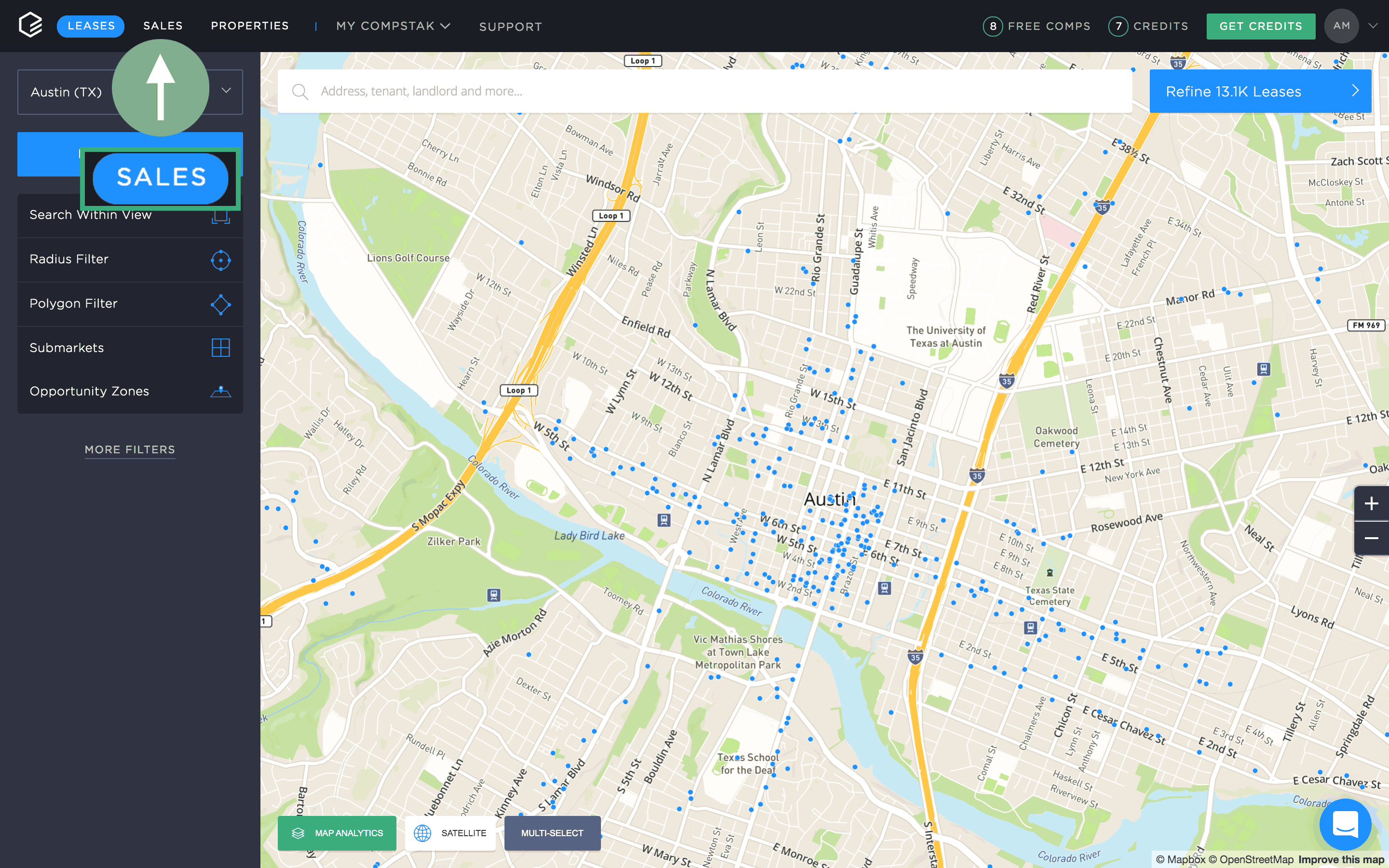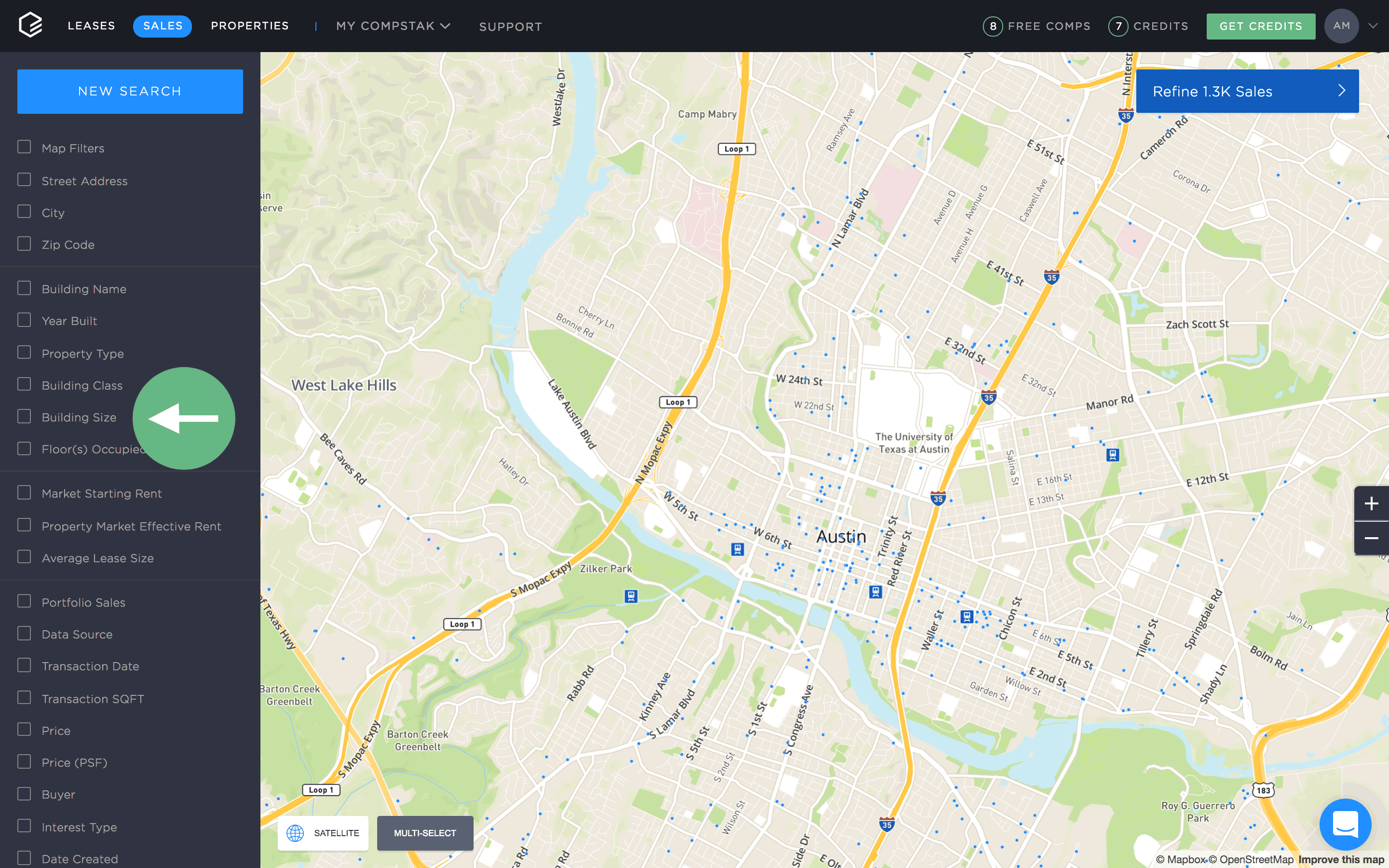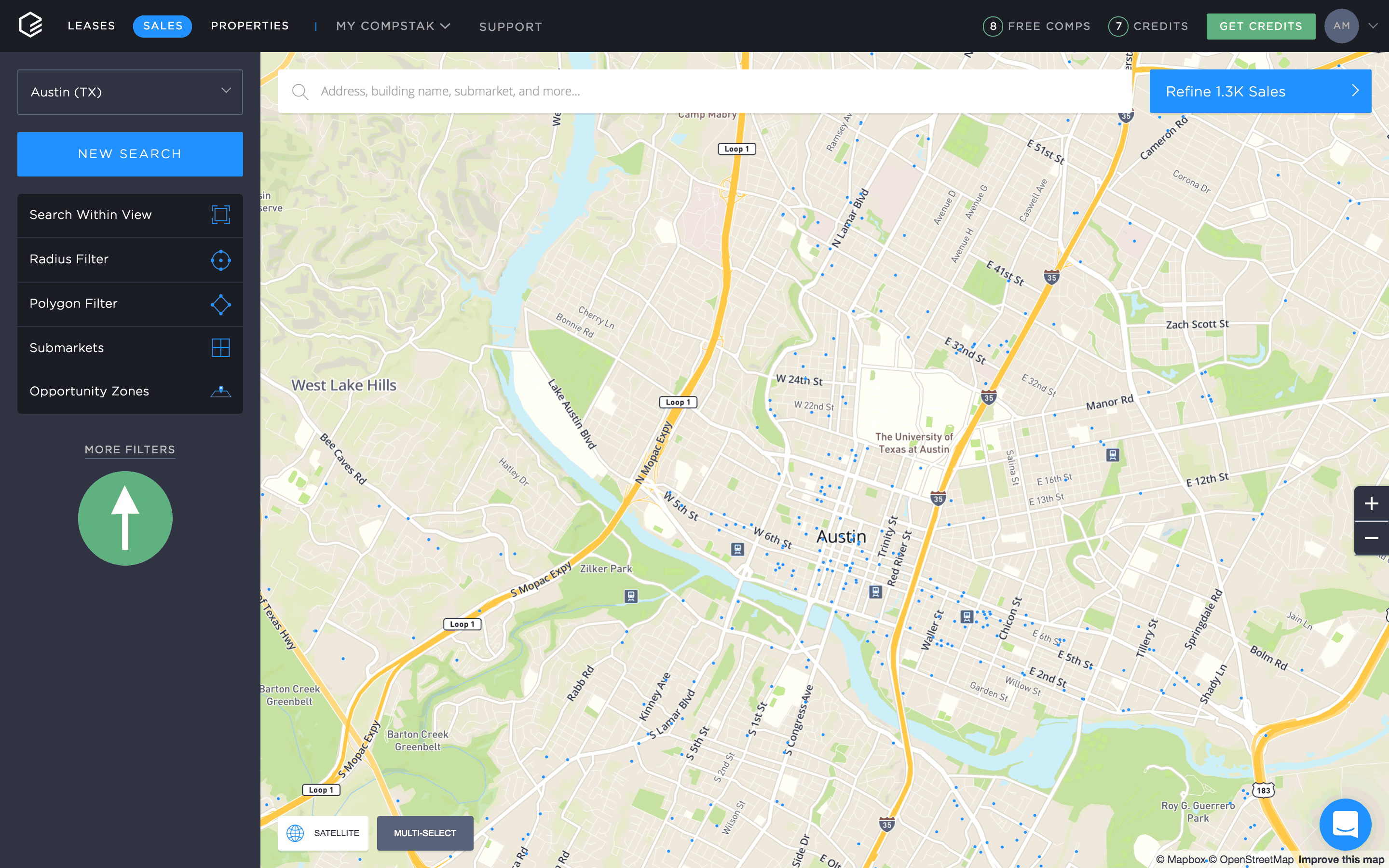Help us direct you to the right place to sign up

Here’s How Appraisers Use CompStak to Support a Sales Comparison Approach
How long does it take you to put together an appraisal for a commercial property? What are the fastest commercial real estate valuation methods?
Chances are, the majority of this time is spent searching for and vetting relevant comps for commercial property appraisal.
Many wonder how to find commercial property value information as quickly as possible. With CompStak Exchange, you can pull the commercial real estate comps you need in just under an hour.
Here’s how!
Imagine you need to complete a commercial property evaluation for an office property in Austin, Texas – 3900 San Clemente, 3900 North Capital of Texas Highway. One of the main challenges is that Texas is a non-disclosure state, which means you won’t be able to find any public sales records. Luckily, CompStak data can help you complete both tasks.
Here’s how CompStak supports a sales comparison approach to commercial real estate valuation and helps you determine what price similar buildings have recently sold for.
The goal here is finding sales comps that are truly similar to the building you are appraising. Some professionals find a sales approach appraisal may be more effective than an income comparison approach or cost comparison approach.
Here’s how you would do it, assuming you have a CompStak Exchange account (it’s free for appraisers).
Log into the platform and find the Austin market. As of the end of 2020, the CompStak database in Austin features 1.2K+ sales comps. Obviously, you will need to filter them to find the relevant ones. There are two ways you can use this commercial real estate valuation tool.
Option 1: You can set up your commercial property appraisal criteria using filters and sort through the list yourself. This process might be a little more time consuming, but you will have more control over which comps you pick.
Option 2: Use CompStak’s competitive building set algorithm.
You save time, but have a little less control over which buildings to compare.
Let’s see what the process would look like in Option 1.
You would start in the Sales tab — where the CompStak sales comps are listed, and set up your search filters. Here is how your search parameters could look like for our hypothetical building.
Searching sales comps by property type
For a sales approach property appraisal you can also choose between the main property types — office, retail, or industrial — plus you can go more granular and specify property subtypes (e.g. warehouse, manufacturing, or Flex/RD).
For example, you would choose “Office”:

Searching sales comps by transaction size
In order to compare property value of buildings of a similar size, you can set minimum and maximum transaction size. For a building that is approximately 200,000 SQFT, you could set the transaction size range as 100,000 to 300,000.

Searching sales comps by transaction date
For commercial building appraisal, in order to see only the buildings that have been sold recently, you would need to narrow down the range for the transaction date.
Here is how you would set up the transaction date filter if you wanted to look at the commercial valuation for buildings sold within the past 5 years.

Searching for sales comps in only one submarket
Depending on your market specifics, you might want to only look at comps in one or several specific neighborhoods. Here is how you could set up your geo filter if you only wanted sales comps in East, South, and Southwest Austin.

Searching sales comps by building class
Here’s how to set the building class — for our purpose, we will set it to A.

Now that you are done setting up your filters, the number of sales comps available has naturally decreased.
The next step is to look at the comps one by one and determine which ones to use for your commercial real estate appraisal report.
Here is one of the commercial property comps that fit your criteria – at a greater detail:

Estimated time: ~20-30 minutes (based on ~1,000 appraiser members sessions.)
Option 2: use the CompStak Competing Building Sets
For this property valuation methodology, you start in the Properties tab — where all the commercial properties we have comps for are listed in the Austin market.
You would find the commercial property for sale report for the building you are trying to appraise — and then select Competitive Set.
It looks like the CompStak algorithm has identified a nearby building — 3700 North Capital — as a “similar” building. You have already seen this sales comp earlier — we have found it using the CompStak filters.

Related Posts
Breaking Down a Lease Comp: Unlocking the Value of Key Data Points in Commercial Real Estate


Breaking Down a Lease Comp: Unlocking the Value of Key Data Points in Commercial Real Estate
CRE Market Movers – Uncovering the Top 10 Tenants Returning the Highest Rent in Industrial Commercial Real Estate


